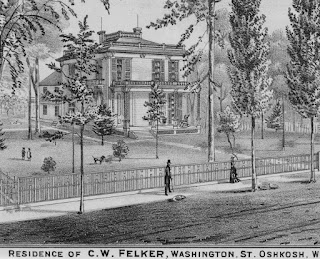In my youth I would occasionally walk home from school, a
stroll that took me nearly the entire length of Washington Avenue. The best part of the walk was from Bowen
Street to my house. It was pleasant because the street was lined with large
graceful trees and elegant well-maintained homes. One of my favorites was the house at 1022
Washington Avenue, a larger white house on the north side of the street, of a simple
design, a porch which stretched across its front and sat on manicured grounds. When I became aware of William Waters I
thought it was perhaps one of his works.
I was never able to link Mr. Waters to the house but I did
learn some interesting facts about the residence. One of the first things learned was that it
did not always look as it does now and it was much older than I thought. The house was built 1865 by Colonel John
Hancock, a lawyer who served in the Civil War. The Hancock’s lived there until 1871, then
moved closer to the lake on Merritt Avenue.
Attorney Hancock sold the place in 1871 to another lawyer, Charles
Felker who’s family resided there until 1919.
In 1894 or so Mr. Felker had the house remodeled and expanded, a large
portion was added to the west side of the house and gabled roofs topped off the
structure. There were two elements
present which led me to conclude the addition was designed by architect Waters;
the graceful brackets supporting the gable ends and the set of four window in
the front gable with an arched light above the center two.
Parenthetically, Mr. Felker was an avid yachtsman and
one-time commodore of the Oshkosh Yacht Club, in 1885 he instituted the race
for the trophy which bore his name and has been contested each year since.




